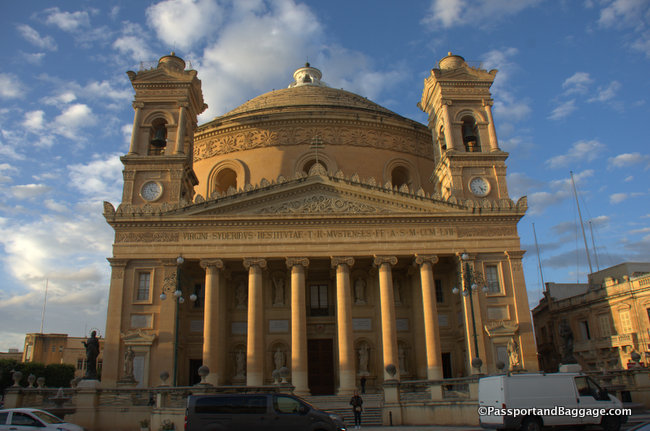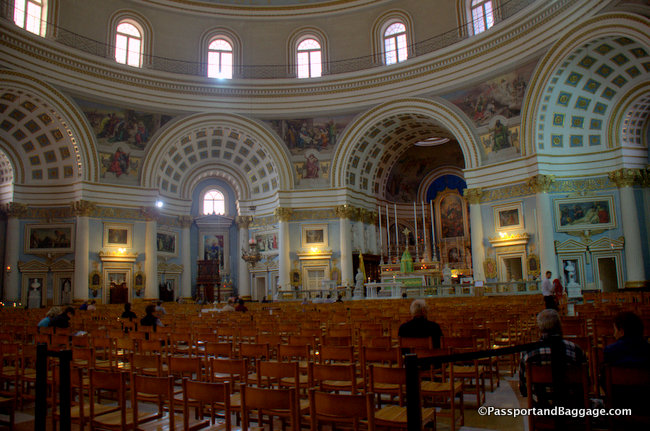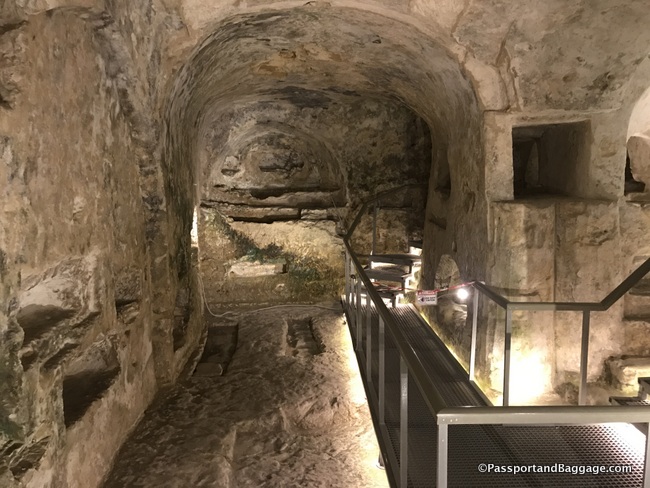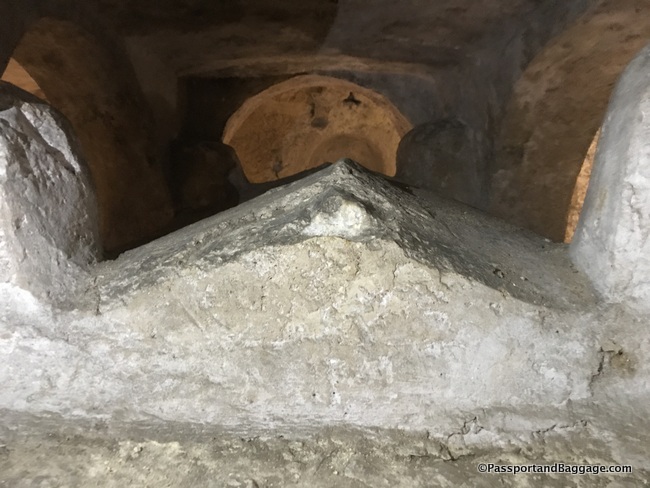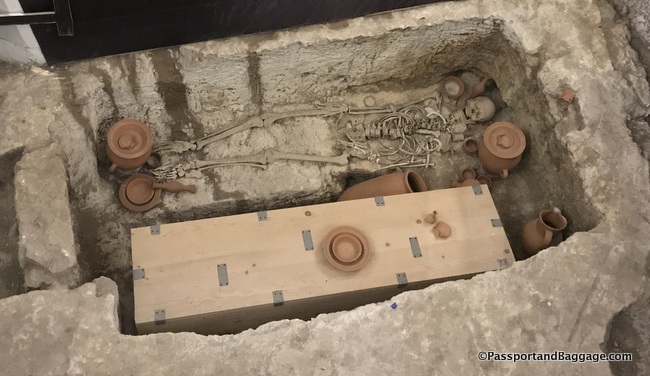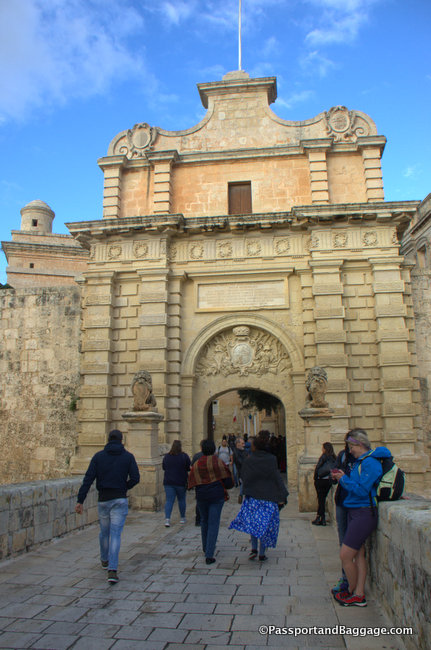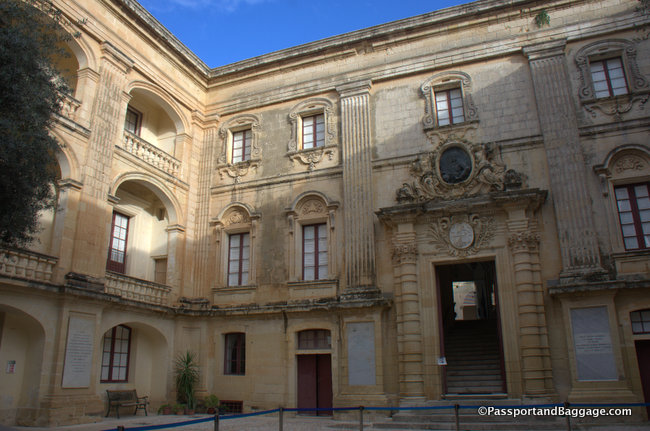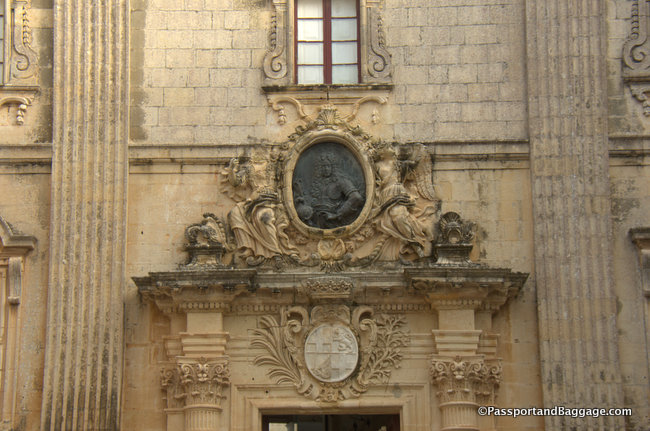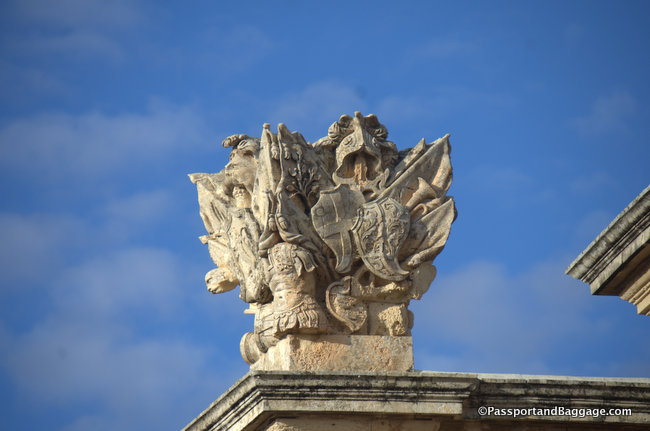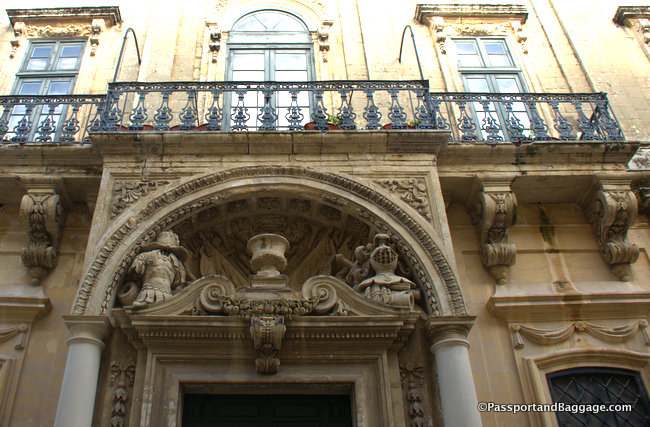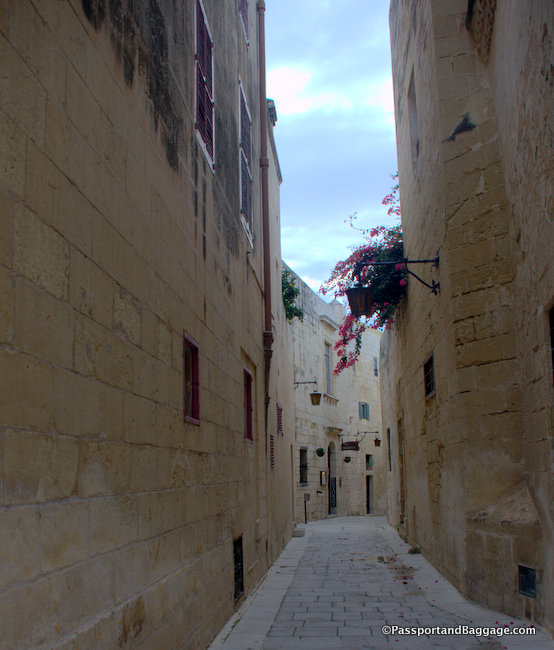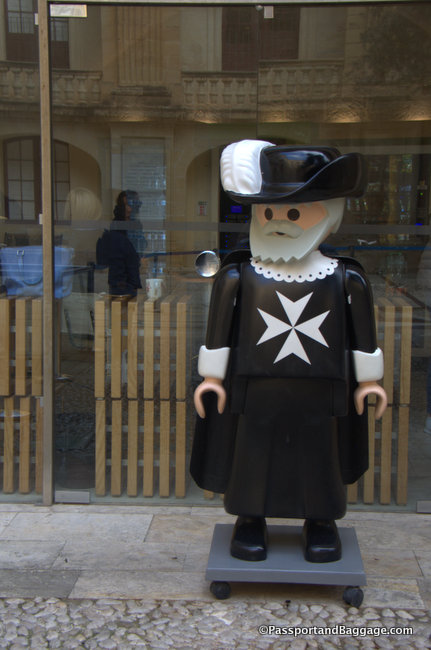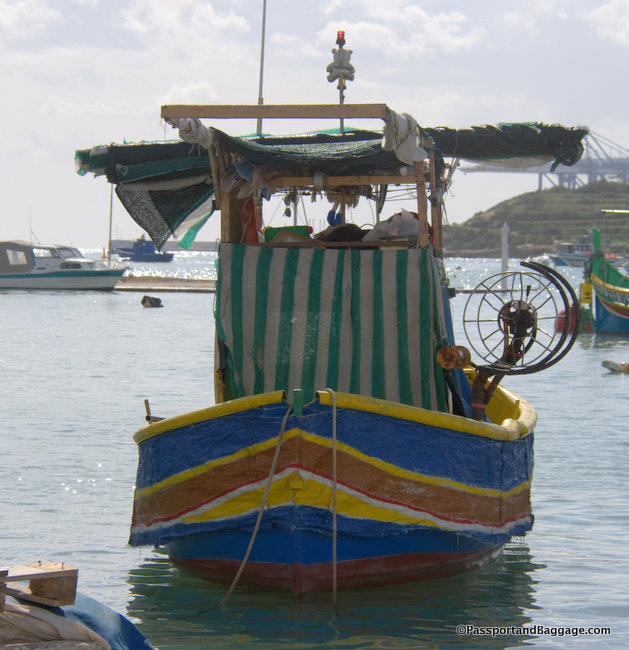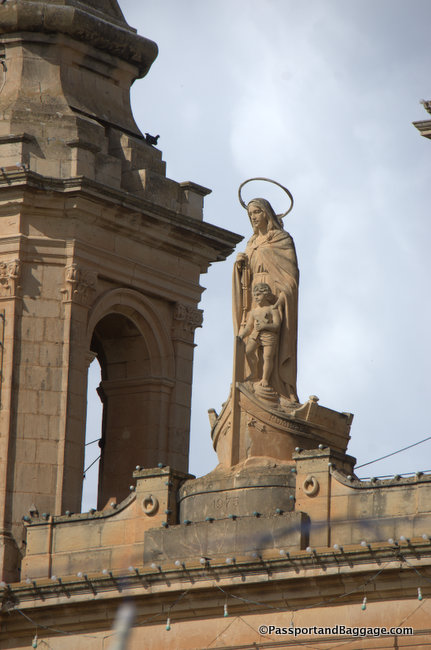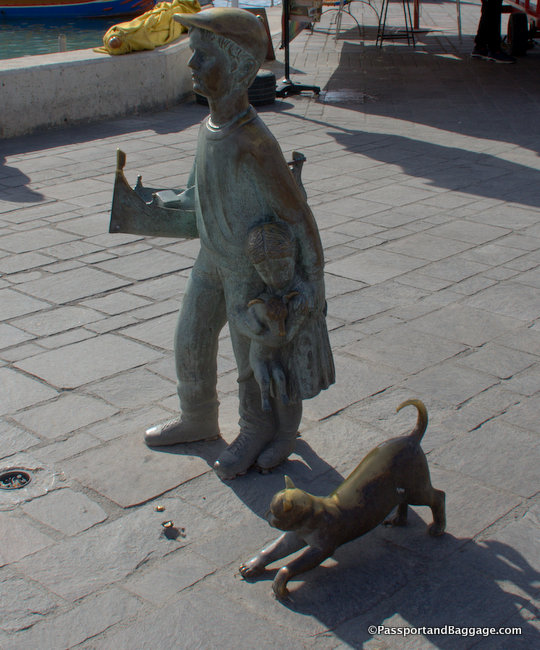November 9, 2019
Mosta, Malta
The Rotunda of Mosta is built in the neoclassical style, and its structure is based on the Pantheon in Rome.
The church was designed by Giorgio Grognet de Vassè. Grognet was of French descent but was a Maltese born architect-engineer and antiquarian with a prolific knowledge of the classics.
Much of what I read, and was told was that Grognet never received a formal education in either architectural or building engineering and, during the construction of Mosta Church, he consulted a member of the Sammut family. This appears not to be true. His education in Frascati, a town south-east of Rome, was leading him towards priesthood. Later, Grognet enrolled in Napoleon Bonaparte‘s army where he spent 13 years at the Civil and Military Department of Engineers preparing and drafting drawings After serving as a military engineer in the French campaign in Ottoman Egypt and Syria he returned to Mosa, quite obviously with a background more than sufficient to handle the design of the new church.
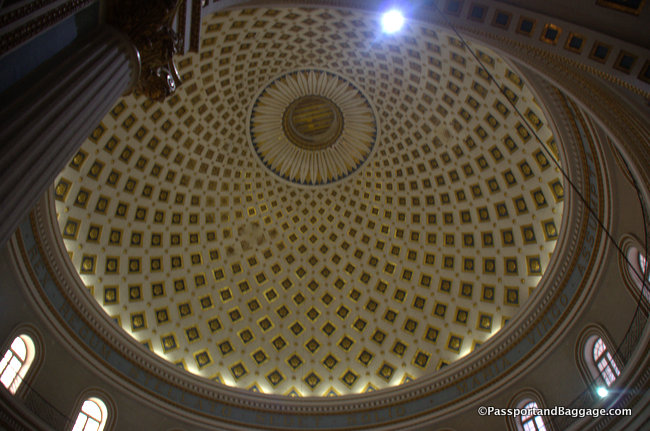 The church has a façade with a portico and six Ionic columns, flanked by two bell towers. Being a rotunda, the church has a circular plan with walls about 30 ft thick supporting a dome with an internal diameter of 122 feet. At one time, the dome was the third-largest in the world. The church’s interior contains eight niches, including a bay containing the main entrance and a deep apse with the main altar.
The church has a façade with a portico and six Ionic columns, flanked by two bell towers. Being a rotunda, the church has a circular plan with walls about 30 ft thick supporting a dome with an internal diameter of 122 feet. At one time, the dome was the third-largest in the world. The church’s interior contains eight niches, including a bay containing the main entrance and a deep apse with the main altar.
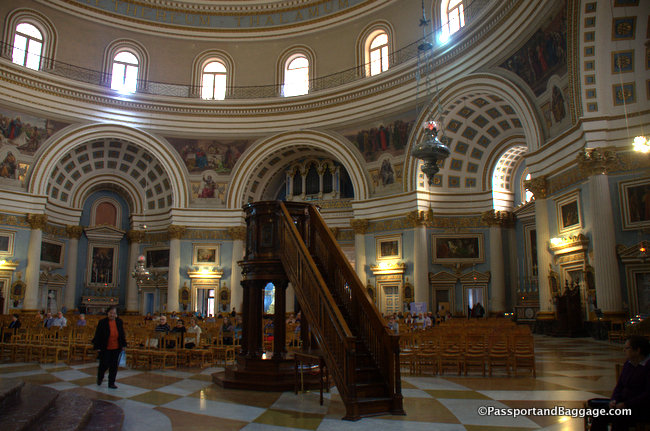 The general public opinion on the island was against the construction of a round church, lead by the bishop Francesco Saverio Caruana (1759-1847). Caruana did not approve of the design as it did not comply with traditional ecclesiastical architecture of nave and apse creating the traditional Latin cross plan. He was against the Pantheon for its pagan associations and thus its form was not fitting for the Christian faith. To the betterment of the future and Mosta, he did not prevail
The general public opinion on the island was against the construction of a round church, lead by the bishop Francesco Saverio Caruana (1759-1847). Caruana did not approve of the design as it did not comply with traditional ecclesiastical architecture of nave and apse creating the traditional Latin cross plan. He was against the Pantheon for its pagan associations and thus its form was not fitting for the Christian faith. To the betterment of the future and Mosta, he did not prevail
During World War II, the town of Mosta was prone to aerial bombardment due to its proximity to one of the five airfields found on the island. On April 9, 1942, the Germans dropped three bombs on the church, with one high explosive bomb piercing the dome and entering the church, where the congregation was preparing for the early evening mass. The bomb did not explode, and a Royal Engineers Bomb Disposal unit defused it and dumped it into the sea. This event was interpreted as a miracle by the inhabitants of Mosta, and a similar bomb is now displayed in the sacristy.
Rabat, Malta
This large provincial township now consisting of Rabat and Mdina was once part of the Roman city of Melita. The town itself was where Rabat is today and that can be ascertained by the crypts that were found underlying most of the city. Mdina would have been the consecrated area, thus no crypts.
The Catacombs of St. Paul and of St. Agatha were used in Roman times to bury the dead. The system of interconnected passages and rock-cut tombs covers an area of over 100,000 square feet, and appear to have been in use from the third century BCE until the end of the Byzantine period in the 8th century CE.
The catacombs of Malta are a unique example of indigenous underground architecture because their method of construction, hewn into the rock, is not found anywhere else.
There are sections for Pagans and Jews, as well as for Christians.
One feature of the catacombs of Malta is that the loculi appeared to be used primarily for children, while in Rome they were used for adults. The large amount of loculi speaks to the commonality of infant and child deaths during this time.
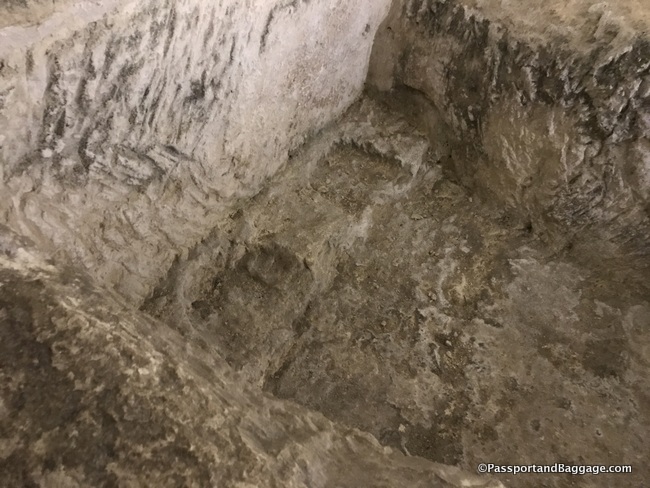
Notice the two indentations for the head. This was a tomb for two people and would have been covered with a slab of rock once the burial had taken place
Here the adults were placed in either Window Tombs or Baldechinno. These would have been covered with either a classic stone top or a saddleback cover.
Another interesting feature in the Maltese Catacombs is the agape tables or triclinia. These were round tables with reclining couches used for meals in commemoration of the dead. While such triclinia were used throughout the Roman world, only here in Malta have they survived almost intact, and it is only here that they were hewn out of the rock.

This fluted column gives an indication that there might have been a Byzantine Church amongst the Catacombs
The catacombs were used during WWII as bomb shelters, primarily by the people that lived in the port cities.
Mdina, Malta
Mdina’s Main City Gate had had different names and titles depending on its rulers and its role but two of its more regal names are ‘Citta’ Notabile’: the noble city or Città Vecchia: old city.
Its Baroque style was designed by Charles François de Mondion — a French architect and military engineer and member of the Order of St. John.
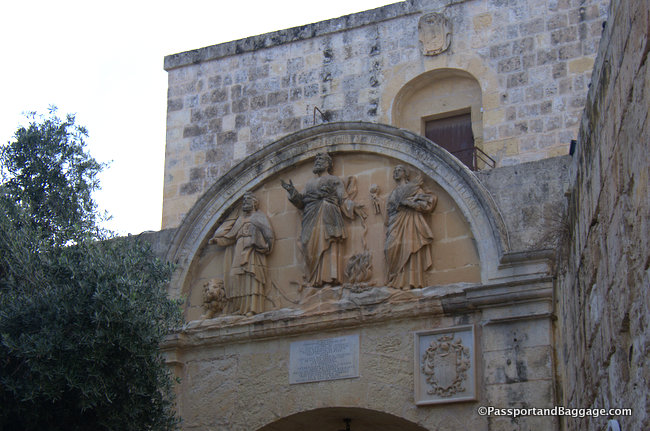
An archway showing the Roman Governor Publius, appointed by Saint Paul to be Malta’s first bishop, Saint Paul in the middle and Saint Agatha on the right. The Inguanez coat of arms can be seen on the right below the lunette.
Mdina has always been home to Malta’s noble families; some are descendants of the Norman, Sicilian and Spanish overlords who made Mdina their home from the 12th century onwards. Even today, the properties are usually passed down from generation to generation. Mdina never regained its pre-1530 importance, giving rise to the popular nickname the “Silent City”.
Mdina is lit by lamps at night and amazingly beautiful palaces line its narrow streets.
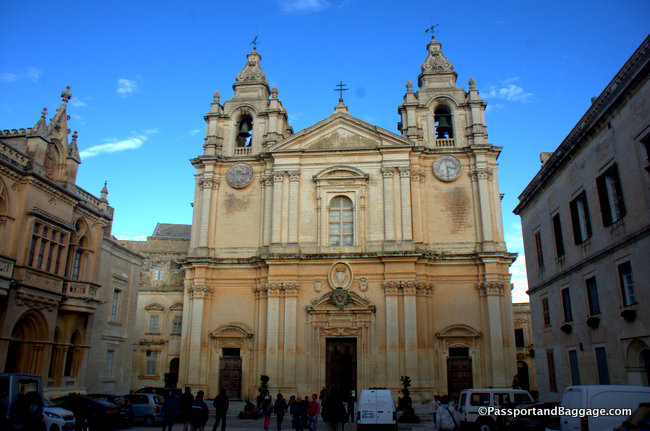
The Metropolitan Cathedral of Saint Paul was founded in the 12th century, and according to tradition it stands on the site where Roman governor Publius met St. Paul following his shipwreck on Malta. The original cathedral was severely damaged in the 1693 Sicily earthquake, so it was dismantled and rebuilt in the Baroque style designed by Maltese architect Lorenzo Gafà between 1696 and 1705.
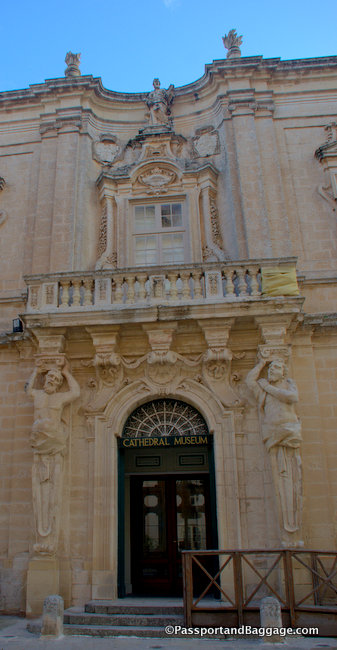
Atlas figures carved from the softer Globergerina Limestone of Malta have sadly lost much of their details
*
Wandering the Harbors of Malta
The dgħajsa can be seen all over Malta and easily recognizable by their colors. The larger versions are called luzzu, both a symbol of Malta. The boats once adorned the back of the Maltese Lira. Both are painted in the traditional colors of red, blue and yellow, in addition, the luzzu boats are sturdy and reliable and can be put to sea in almost every kind of weather.
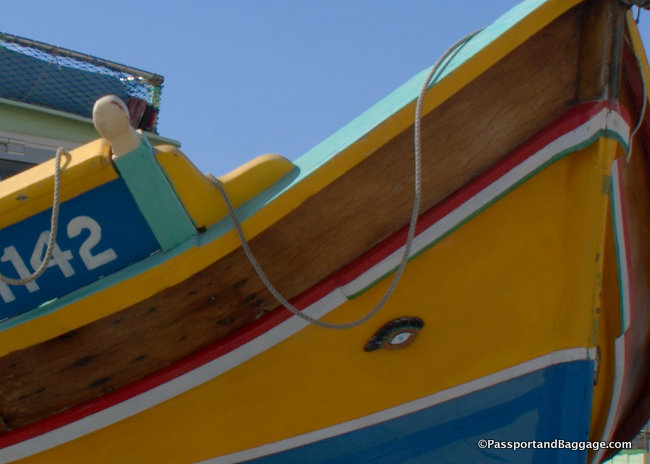 Many luzzijiet (plural) have the eye of Osiris painted on the bow, a symbol said to have been brought to Malta by the Phoenicians. This seems to suggest that this type of boat has been common in the harbor since the time of the Phoenicians and Carthaginians.
Many luzzijiet (plural) have the eye of Osiris painted on the bow, a symbol said to have been brought to Malta by the Phoenicians. This seems to suggest that this type of boat has been common in the harbor since the time of the Phoenicians and Carthaginians.
A small bit of history might be necessary here.
At around the year 750 BCE the Phoenicians settled in Malta. The Phoenicians were highly civilized people who used the Maltese islands as a stop on their trade routes.
The Carthaginian Period in Malta started at around the year 480 BCE Carthage, was a city founded by the Phoenicians on the north coast of Africa located in what is today Tunisia. The Carthaginians ruled Malta for about two and a half centuries.
The Carthaginians had to relinquish these islands to the Romans who seized control of Malta at the second Punic War in 218 BCE
The boats are also represented in art found around the island.
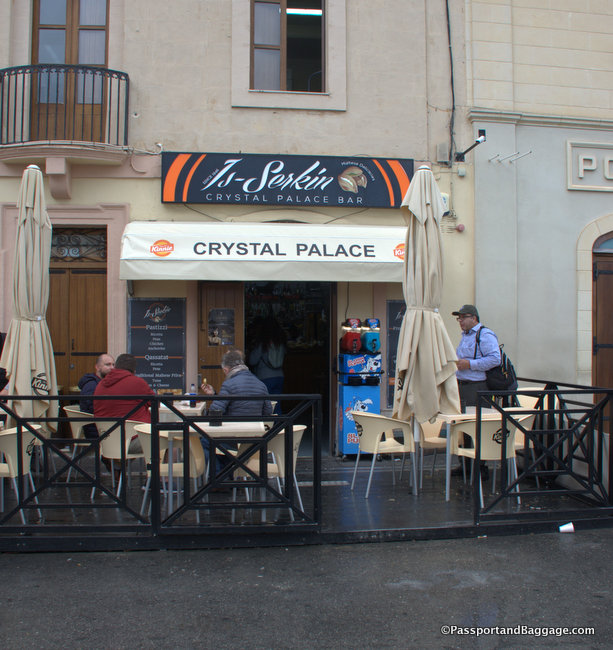 The day was rounded out with the traditional pastizzi of Malta. Pastizzi are diamond-shaped crisp pastry filled with ricotta cheese or mushy peas (honest, they are delicious!) Two pastizzi (one of each flavor) and a cup of coffee, served in the traditional way, in a juice glass, cost me 1 Euro 20.
The day was rounded out with the traditional pastizzi of Malta. Pastizzi are diamond-shaped crisp pastry filled with ricotta cheese or mushy peas (honest, they are delicious!) Two pastizzi (one of each flavor) and a cup of coffee, served in the traditional way, in a juice glass, cost me 1 Euro 20.
I had the chance to try pastizzi at the Crystal Palace in Rabat. It is often voted the best pastizzi shop on all of Malta, and when it went up for sale a few years ago it sent the entire nation into a panic. The new owners had the good sense not to change a thing.
